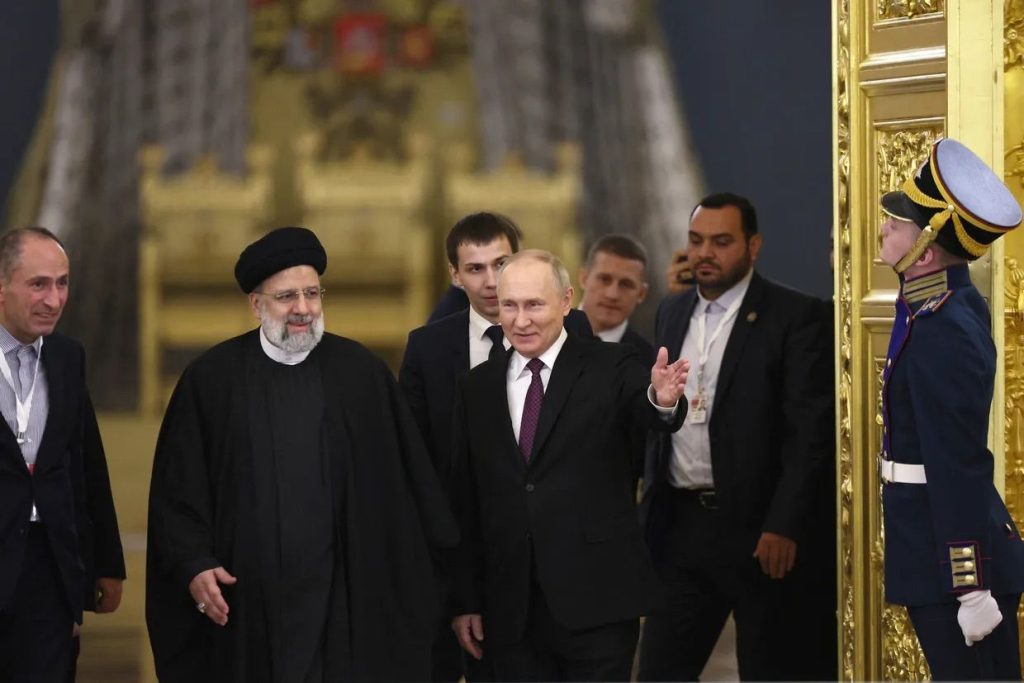Iran’s President Ebrahim Raisi and his foreign minister are presumed dead after a helicopter crash in a mountainous area in Iran, with rescue teams finding no survivors. The crash occurred on May 19 near Tabriz, and despite efforts to locate and rescue the passengers, all are feared dead. Raisi, who was elected president in 2021, had close ties with Russia, with Iran providing military support to Russia during the Ukraine conflict. Iran supplied Russia with drones and ballistic missiles, and the two countries have deepened their military and political cooperation since the invasion of Ukraine. The tragic helicopter crash has raised questions about the future leadership of Iran and its impact on international relations.
The helicopter crash involving President Raisi and other government officials has shocked the nation, with Iranian state media confirming the tragic incident. Despite efforts by rescue teams to locate the crash site and rescue any survivors, the harsh weather conditions and mountainous terrain posed challenges. The crash is a blow to Iran, as Raisi was elected president in a landslide victory but faced low voter turnout. The incident has also raised concerns about the stability of leadership in Iran and its implications for the country’s domestic and international affairs.
The close relationship between Iran and Russia has come under scrutiny following the helicopter crash and the presumed deaths of President Raisi and his foreign minister. Iran has been a key ally to Russia during the conflict in Ukraine, providing military support and resources to Moscow. The two countries have strengthened their cooperation, with Iran supplying drones and ballistic missiles to Russia for use in the conflict. The crash has highlighted the complexities of international alliances and the impact of such relationships on global politics.
The crash of President Raisi’s helicopter has sent shockwaves through Iran and the international community, with many mourning the loss of the country’s leader and other government officials. Raisi’s presidency was marked by tensions within Iran and with other nations, particularly due to the country’s involvement in conflicts such as the Ukraine crisis. The incident has raised questions about the future leadership of Iran and how it will navigate its relationships with other countries, particularly Russia. The tragedy has underscored the unpredictability of political events and their ramifications on a global scale.
The helicopter crash in Iran has brought attention to the risks faced by political leaders and government officials in conflict zones and unstable regions. The tragedy serves as a reminder of the dangers involved in diplomatic missions and official engagements, particularly in areas with harsh weather conditions and difficult terrain. The crash has also highlighted the vulnerability of high-ranking officials to such accidents and the impact they can have on a nation’s leadership and governance. The incident has prompted calls for increased safety measures and precautions for political leaders and officials traveling in risky environments.
The aftermath of the helicopter crash involving President Raisi has left Iran mourning the loss of its leader and grappling with the implications for its political landscape. The tragedy has raised concerns about the continuity of leadership and the stability of the country’s governance, as well as its relationships with other nations. The crash has underscored the fragility of political power and the risks faced by those in positions of authority. As Iran and the international community come to terms with the aftermath of the crash, there is a renewed emphasis on the importance of safety and security for government officials and the need for careful consideration of risks in diplomatic engagements.


